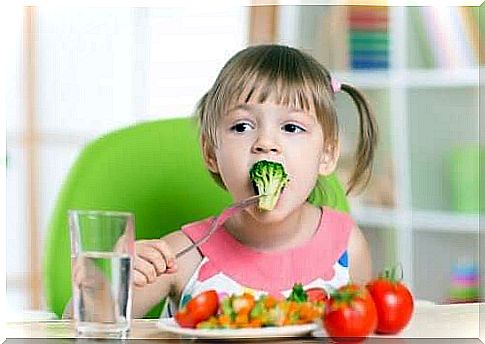Children’s Food Tastes

Ever wonder why kids hate broccoli but never turn down a candy? If your answer is that it just depends on genetics, you are mistaken. This is an idea that has been around for a long time. However, after numerous investigations, it was observed that food tastes are learned. Do you want to know how this happens? Find out below.
How do food tastes develop?
First, you should know that taste buds develop around 7-8 weeks of gestation. So it all starts in the womb. During this period, the baby develops thanks to the nutrients that pass through the umbilical cord and amniotic fluid. These nutrients come from the mother’s diet.
Later, when receiving breastfeeding, we also perceive the flavors of what our mother eats. In this way, the taste buds get used to it, so when foods are introduced, we generally prefer foods that taste similar to what we already know.
In addition, repeated exposure, social environment and emotions associated with eating also play a role. Even culture is also decisive.

Influence of the type of breastfeeding on food tastes
Although the benefits of breastfeeding with breast milk are greater compared to the use of processed milk, it is not always possible to maintain it for at least 6 months.
Clinical studies show greater variability in flavor acceptance and an ease to try new foods if breast milk. In fact, the diet is generally healthier, as long as the mother also follows it.
salty perception
It develops at 4 months of age innately. Generally, from the age of 2, babies have a greater desire for this type of food compared to adults.
There is even a relationship between low birth weight and the consumption of salty foods. But, as with all food tastes, it is possible to educate the taste buds.
Nobody can spare a candy!
There will rarely be a child who rejects this flavor unless it is offered little. The sweet taste is always associated with well-being and pleasure, as it activates these areas of the brain.
In addition, it was observed that, given the minimum contact of children with this flavor, the heart rate and the amount ingested increase. This is because breast milk is sweet.
Furthermore, it is a flavor associated with parties and celebrations, thus generating a feeling of joy. That’s why, in adulthood, we eat something sweet when we have a bad day.
However, the degree of awareness varies according to the presence of certain genes. Therefore, the most sensitive usually reject the sweet in large quantities.

rejection by the bitter
It was considered a poison in Prehistory, as it was characteristic of unripe fruits consumed to survive. People who consumed them got sick or died. Hence the innate rejection that could explain why children hate certain vegetables, such as broccoli and Brussels sprouts.
As with the sweet taste, we also have receptors that predispose to greater sensitivity to that taste.
If our child is a super taster (he finds it too intense, even if it’s minimal), no matter how hard we try to offer it, he will always reject it. Otherwise, after 10 or more attempts, it will probably accept it.









